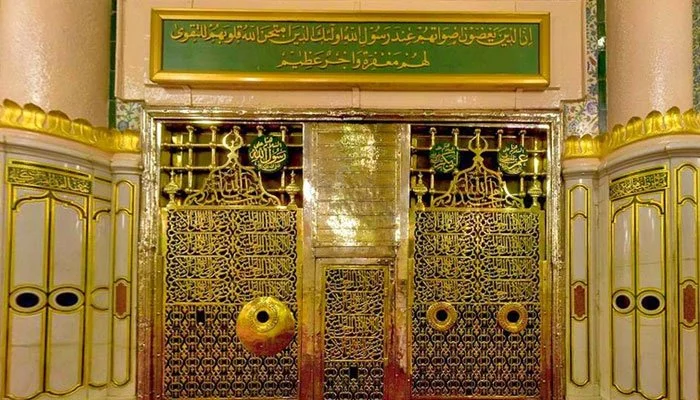Introduction
The life of the Holy Prophet Hazrat Muhammad (SAW) is an extraordinary and inspirational journey that has left an indelible mark on the world. From his birth in the Arabian city of Mecca to his divine mission and the establishment of Islam, this article will take you through the significant events and teachings of the Prophet’s life.

Early Life and Background
The story begins in the year 570 CE in the heart of Mecca. Muhammad ibn Abdullah, who would later be known as Prophet Muhammad (SAW), was born into the respected and noble Quraishi tribe.
Family and Childhood
Muhammad (SAW) was orphaned at a young age, and his early years were marked by resilience and wisdom. He was raised by his grandfather, Abdul-Muttalib, and later by his uncle, Abu Talib.
The Divine Revelation
In the year 610 CE, at the age of 40, Muhammad (SAW) received a life-changing revelation from Allah (SWT) through the angel Gabriel. This event marks the beginning of his prophethood.
The Cave of Hira
The first revelation took place in the Cave of Hira, where Muhammad (SAW) was in deep contemplation and prayer. These revelations would eventually form the Quran, the holy book of Islam.

Spreading the Message
With a divine mission entrusted to him, Prophet Muhammad (SAW) embarked on the arduous task of spreading monotheism and the teachings of Islam.
Opposition and Persecution
The early years of preaching were met with resistance and hostility from the Quraysh leaders, who felt threatened by the message of Islam.
The Migration to Medina
In 622 CE, due to increasing persecution and hostility, Prophet Muhammad (SAW) and his followers made the historic journey to Medina, marking the Hijra.

Building a Community
In Medina, the Prophet (SAW) established a thriving and inclusive community, where the principles of justice, equality, and compassion were upheld.
Consolidating Islam
Over the next decade, Prophet Muhammad (SAW) faced various challenges, including battles and negotiations, to establish and protect the Muslim community.
The Battle of Badr
The Battle of Badr in 624 CE was a turning point, where the small Muslim army faced a much larger force and emerged victorious, reinforcing their faith.

The Farewell Pilgrimage
In the year 632 CE, Prophet Muhammad (SAW) performed his last pilgrimage to Mecca, delivering his famous Farewell Sermon.

Universal Message
In his sermon, he emphasized the universal message of Islam, emphasizing equality and unity among all believers.
Conclusion
The life of the Holy Prophet Hazrat Muhammad (SAW) is a testament to unwavering faith, resilience, and dedication to the divine message. His legacy continues to inspire millions around the world.
Frequently Asked Questions (FAQs)
- What is the significance of Prophet Muhammad’s (SAW) birthplace, Mecca?Mecca is the holiest city in Islam and the birthplace of the Prophet Muhammad (SAW). It is the site of the Kaaba, the most sacred structure in Islam, toward which Muslims worldwide turn during prayer.
- What are the key teachings of Islam propagated by Prophet Muhammad (SAW)?Prophet Muhammad (SAW) preached monotheism, compassion, justice, and the importance of community. He also emphasized the five pillars of Islam, including prayer, fasting, charity, pilgrimage, and the declaration of faith.
- How did the Hijra to Medina impact the early Muslim community?The Hijra to Medina marked the beginning of the Islamic calendar and allowed Muslims to establish a strong and supportive community, free from the persecution they faced in Mecca.
- What was the significance of the Battle of Badr in Islamic history?The Battle of Badr was a significant event as it demonstrated that the early Muslim community could successfully defend itself against adversaries, boosting the morale and faith of believers.
- What is the importance of Prophet Muhammad’s (SAW) Farewell Sermon?Prophet Muhammad’s Farewell Sermon emphasized crucial values like equality, justice, and unity among believers, serving as a guiding light for Muslims worldwide.

